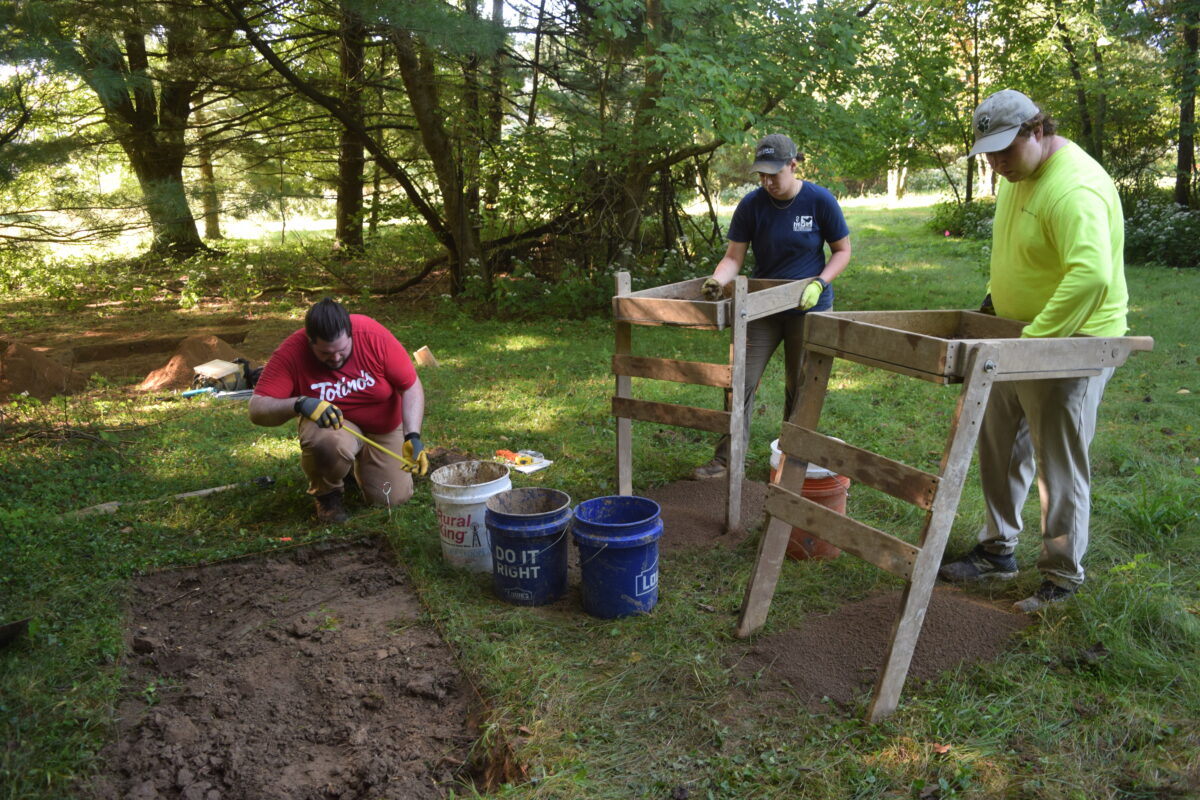While construction crews were building a temporary bridge over Raccoon Creek to reopen the Cherry Valley Road crossing that abruptly closed in October, a crew of archaeologists were uncovering a wealth of artifacts Native Americans left nearby nearly 2,000 years ago.
The archaeological excavation revealed pottery, oven fragments, and various stone tools, including flint tools mined east of Newark.
“They’re just absolutely beautiful,” said Andrew Sewell, senior historian and principal investigator at Lawhon & Associates in Columbus, describing the semi-translucent flint tools.
Through extensive surveys and analysis, Sewell determined that a Hopewell family likely inhabited the excavation site in what became the front yard of a house at the corner of Reddington Road and Thornwood Drive.
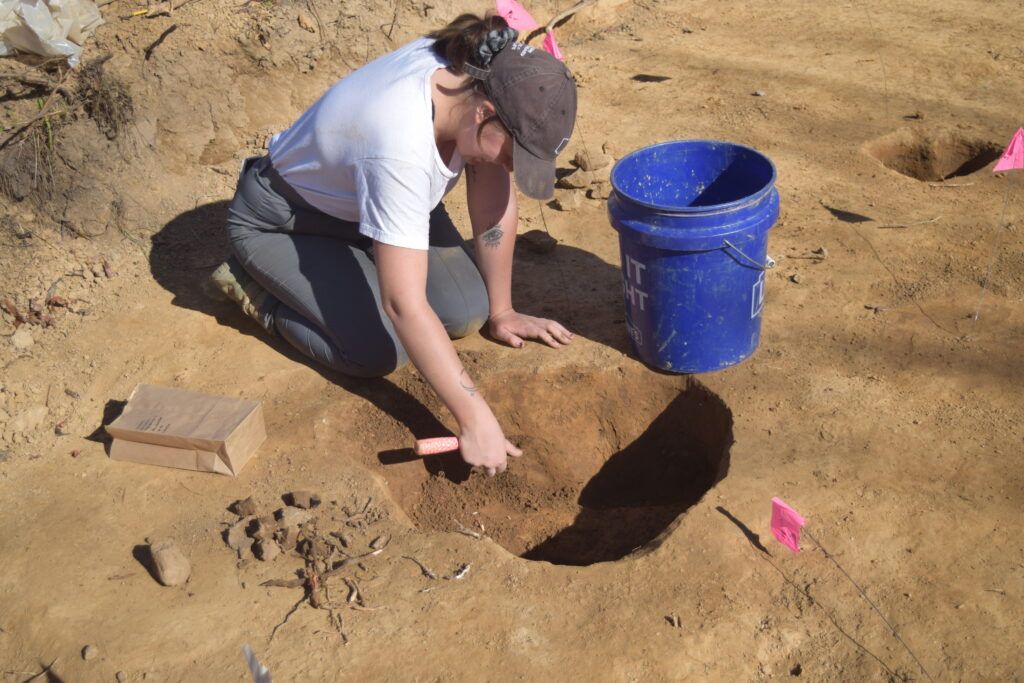
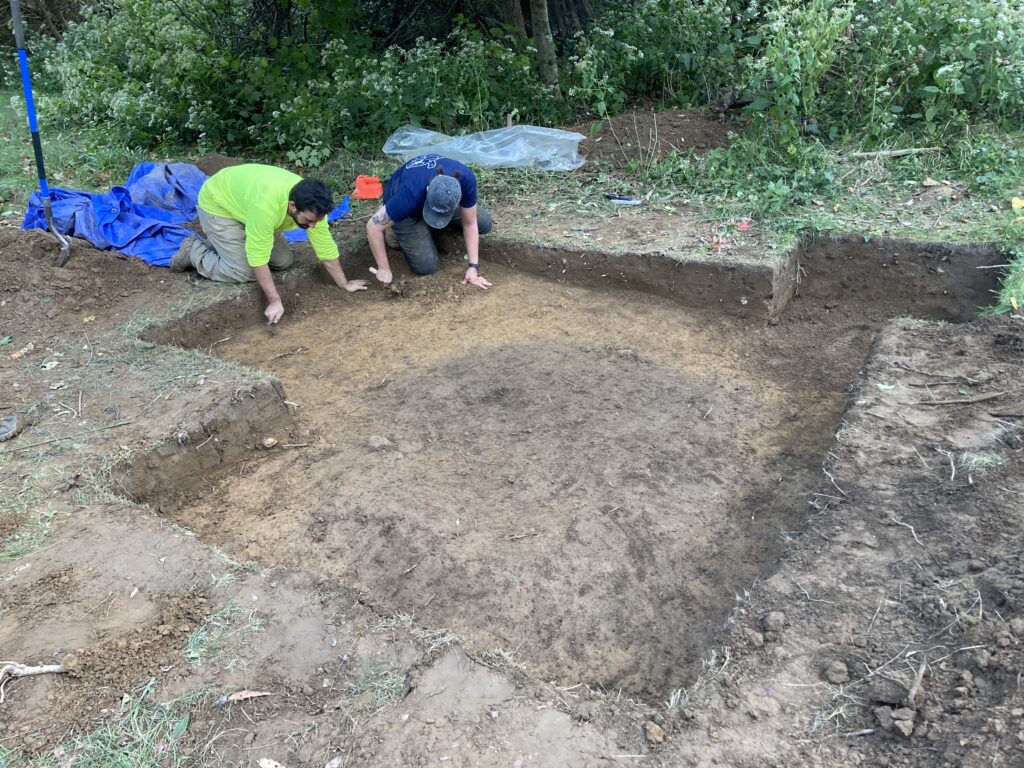
The $1.5 million temporary bridge is on track to open by the end of April, but much more work will continue nearby as the city of Newark builds a new $17 million roadway, bridge and roundabout to connect Cherry Valley Road, Thornwood Crossing, Thornwood Drive, Reddington Road and River Road in a more direct path than the current convoluted configuration.
Engineers deemed the 190-year-old bridge unsafe, leading to its closure on Oct. 5. The city of Newark had intended to replace it, but the unexpected closure forced a change in plans – a temporary bridge to get traffic flowing again as construction begins on a nearby new bridge and roadway expected to open in 2025.
Site preparation work for the new bridge and roadway is underway. “It’s great to see this come to construction finally,” said Newark City Engineer Brian Morehead.
During a fall inspection, a federal highway inspector declared the old bridge in poor condition and ordered it closed.
“For the past five or six years, that bridge has had issues that we’ve had to keep monitoring and repairing,” Morehead said.
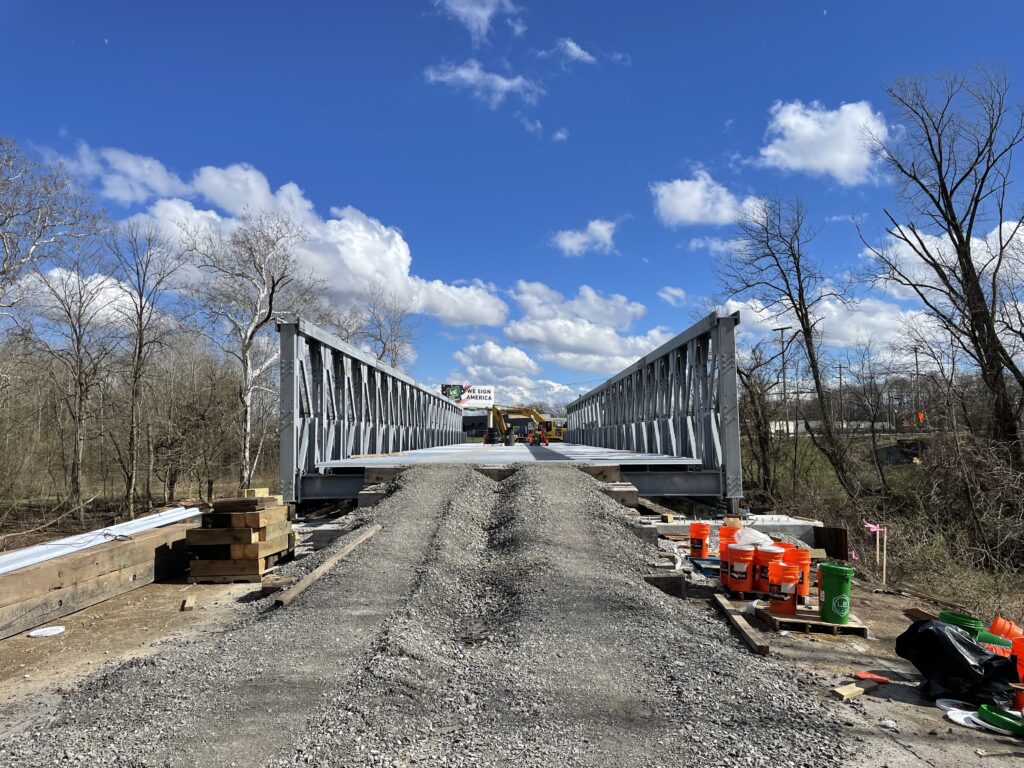

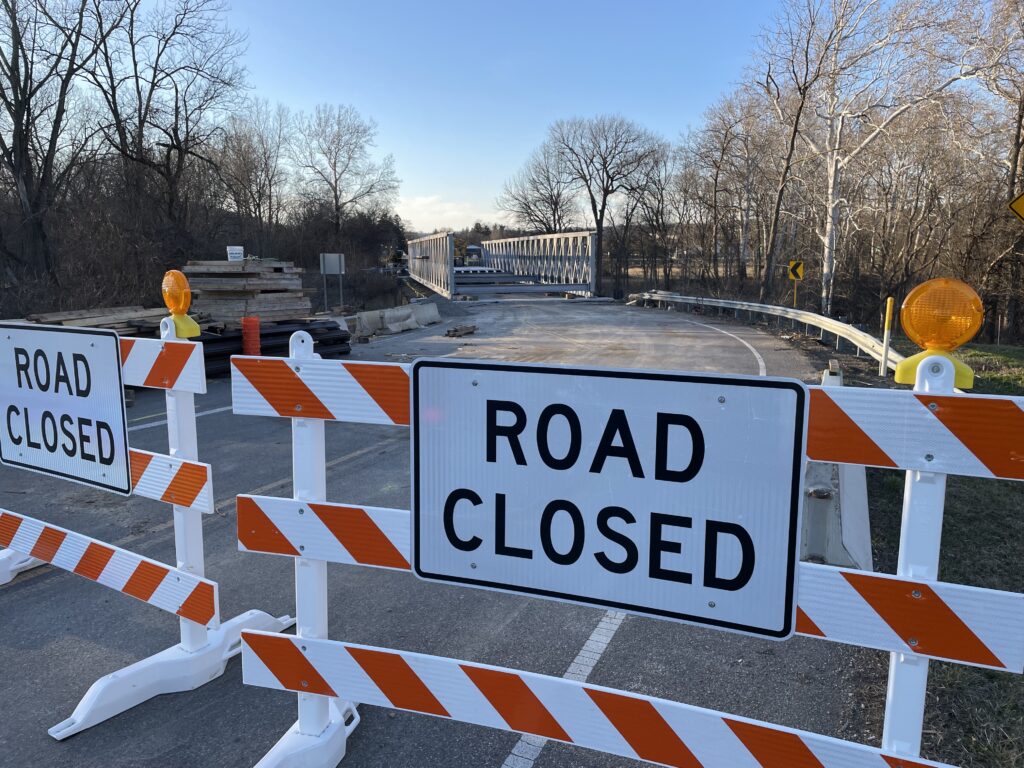
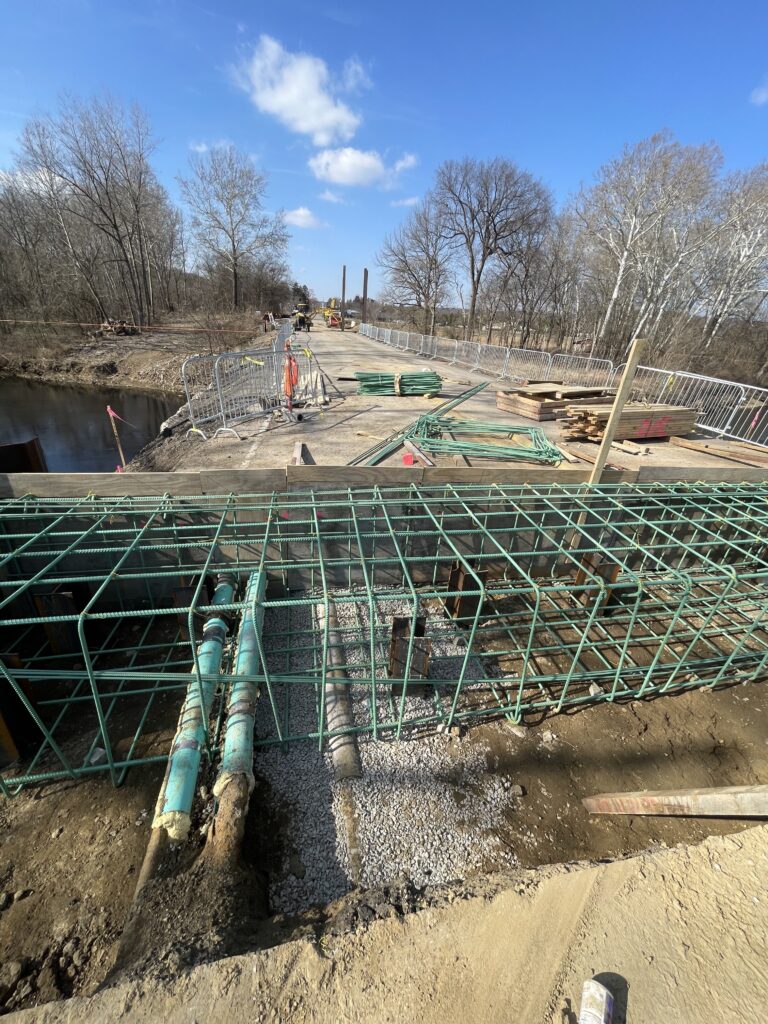
Before any site preparation or construction could begin on the new bridge, roadway realignment and roundabout, an archaeological survey was performed. Starting in early 2018, a team of archaeologists from Lawhon & Associates, an environmental engineering firm, were hired to do the survey.
What they’ve found is shedding new light on the lives and culture of the Hopewell Native Americans who once lived in the area.
Their survey was required by the National Historic Preservation Act, which mandates surveying such a construction site to determine whether it has historic and/or cultural structures that otherwise would be affected by regulations guiding projects involving federal funding. In this case, it did.
The Showman Arch Bridge, which has carried Cherry Valley Road traffic over Raccoon Creek near Reddington Road, was built in 1833 as an Ohio & Erie Canal aqueduct and later became a road bridge. In recent years, it had been carrying far more traffic than ever, including heavy semi trucks from Rt. 16 south to industries on the west side of Newark and in Heath and Hebron.
Nearly 10 years prior to the bridge’s closure, archaeologists discovered artifacts relating to the Hopewell Native Americans, but no scientific investigation of the site was conducted until recently.
“This was an extensive, multi-step operation,” said Sewell, describing the dig done in the past year.
Their investigation was divided into phases. First, the team conducted a baseline archaeological survey, with the primary objective of identifying significant dwelling or ceremonial sites in the area. Their search would lead them to the yard at a house at the intersection of Reddington Road and Thornwood Drive, just west of the old bridge.
Once the primary site was found, the team continued with a test-pit excavation done with hand shovels. They dug small holes 50 feet apart, and when areas of interest were found, the distribution of holes was narrowed to 25-foot intervals as they honed in on areas of “primary occupation.”
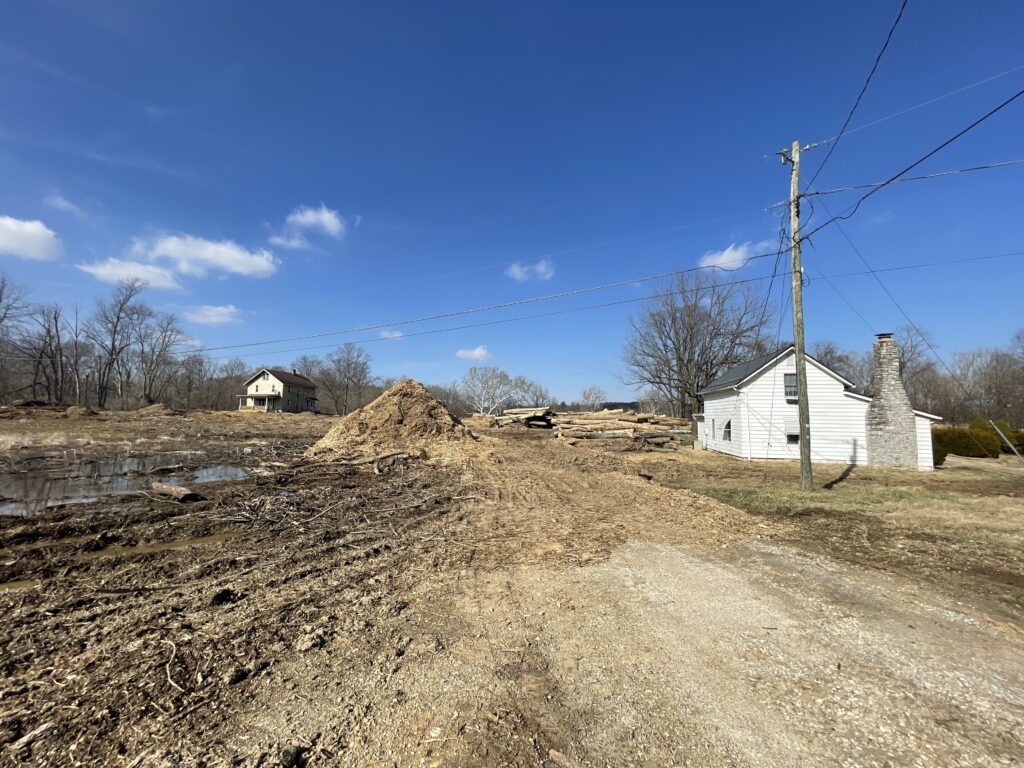
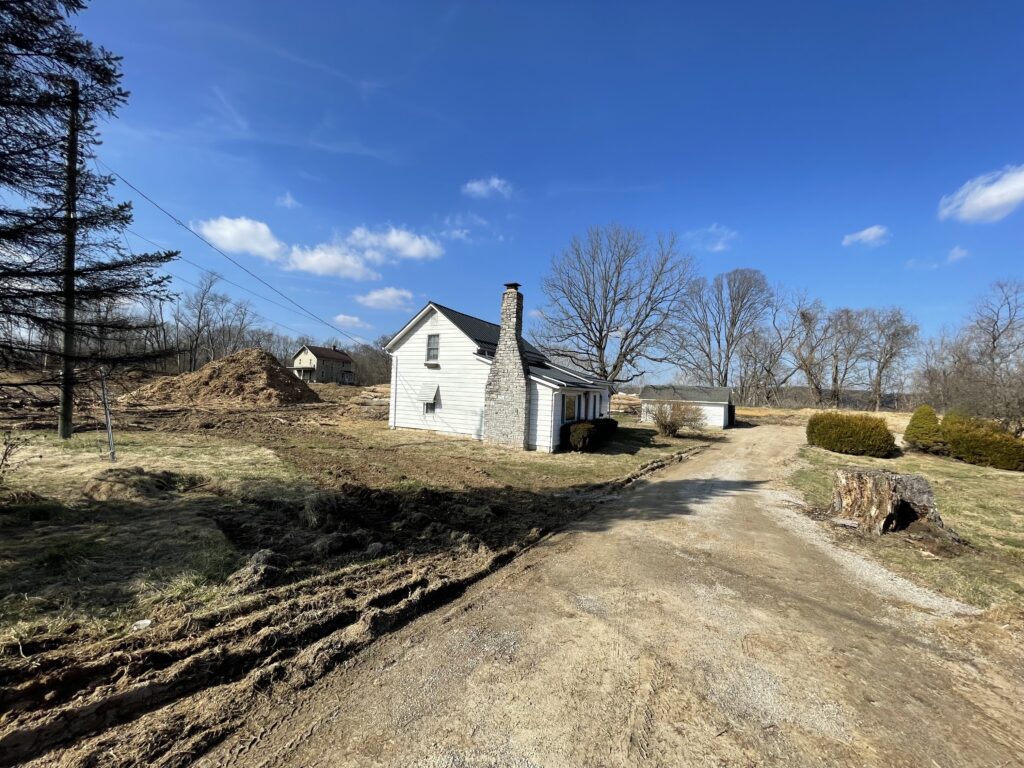
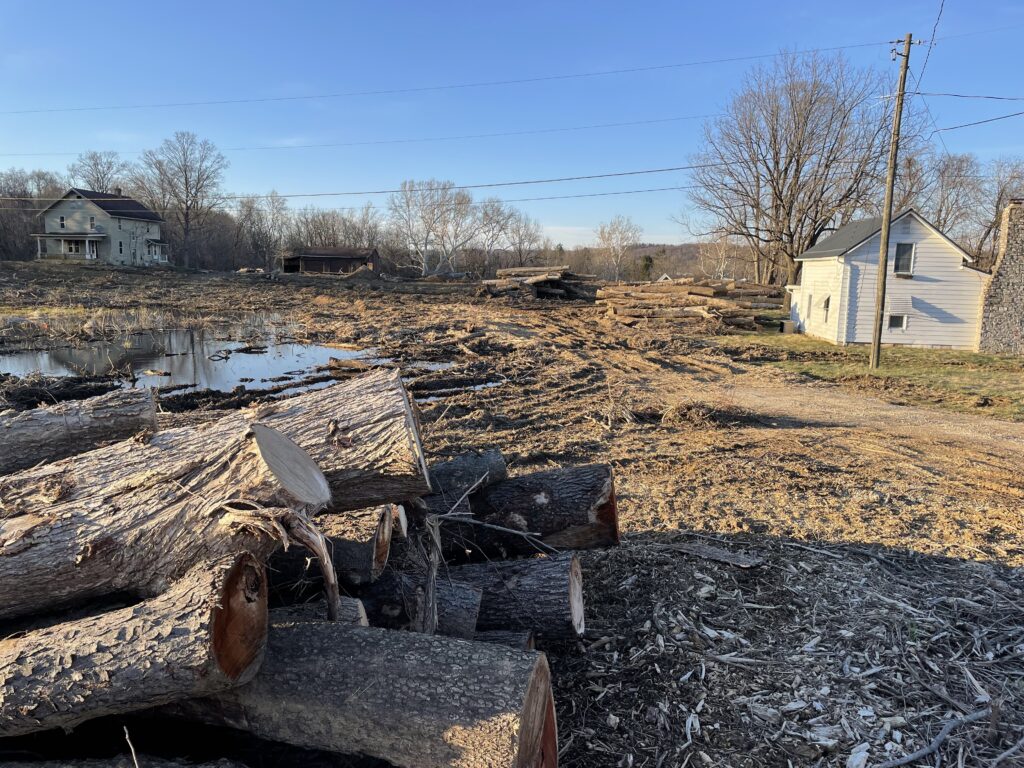
The final step of the first stage is a geophysical survey, carried out by a magnetic gradiometer. The instrument is used to measure fluctuations in the Earth’s magnetic field, which indicate the presence of subsurface structures, such as mineral deposits or archaeological sites. In this case, Sewell and his team were able to detect the location of fire hearths due to the contrast of “fiery” soil against the natural magnetic background of the earth.
Following phase one, the Lawhon & Associates team crafted a memorandum of agreement.
“Lots of different parties were interested in the project,” Sewell said.
This agreement between the Ohio Department of Transportation, the state and Licking County historical societies and affiliated Native American groups outlines a partnership to address issues related to historic preservation and cultural resources at the site. Then phase two began.
Sewell’s team began this larger excavation with a new practice of analysis. Soil samples were taken every 10 feet within the designated area. These samples were subsequently sent to the anthropology lab at Ball State University for in-depth analysis. The lab conducted measurements of the soil phosphate levels, with elevated concentrations indicating a presence of human activity. The results of the analysis were conclusive.
“We really got excited about this, knowing we were on the right track,” Sewell said.


The large-scale excavation was then conducted at the site, with test holes measuring between 3 square feet and rectangles 6 by 3 feet. A total of 24 holes were excavated, with 12 located in the front yard, and an equal number scattered on the sides and in the back of the site. The excavation yielded the pottery, oven fragments, and stone tools.
At the top of this list were the flint tools, also called “bladelet cores.” Cylindrical in shape, these flint cores wear the scars of small, thin bladelets that have been cut off of them.
The Hopewell people, known for their advanced flint-working techniques, crafted small bladelets from flint mined at the Flint Ridge quarries east of Newark. These cores, measuring between 3 and 4 inches in length, feature striking bands of red and blue color and were used in ritual settings for decoration in various domestic settings.
During the site study, 23 unique features were identified and interpreted as cultural remnants of the native inhabitants. Among the discoveries were patterns of post stains, indicating the presence of structures, as well as stains associated with earthen ovens, a primitive method of cooking that involved digging a hole in the ground, lining it with stones, and building a fire inside.
Archaeologists commonly refer to these structures as hamlets.
They were similar to others found in the region, specifically the “Murphy Site,” which was investigated in the late 1980s before construction of the Erinwood subdivision along Newark-Granville Road in Granville. This site also was home to an early 1800s farmhouse that was moved to become the core of the nearby Welsh Hills School building. The distribution of Hopewell artifacts and domestic features at that site was comparable to Sewell’s recent findings just about a mile south.
Sewell says that it’s important to gain a deeper understanding of the everyday, domestic life of ancient people, in addition to studying the grand ritual sites such as the Newark Earthworks a couple of miles east.
“By examining domestic sites, we can gain valuable insights into the agricultural, behavioral and familial sides to Hopewell culture” Sewell said.
While their field work is complete, Sewell and his team are continuing to catalog and analyze their findings. Sewell aims to complete their report within the coming months.
“We still have a lot of work to do and many questions to be answered,” Sewell said.
Jack Wolf writes for TheReportingProject.org, the nonprofit organization of the Denison University Journalism program, which is funded in part by the Mellon Foundation.

